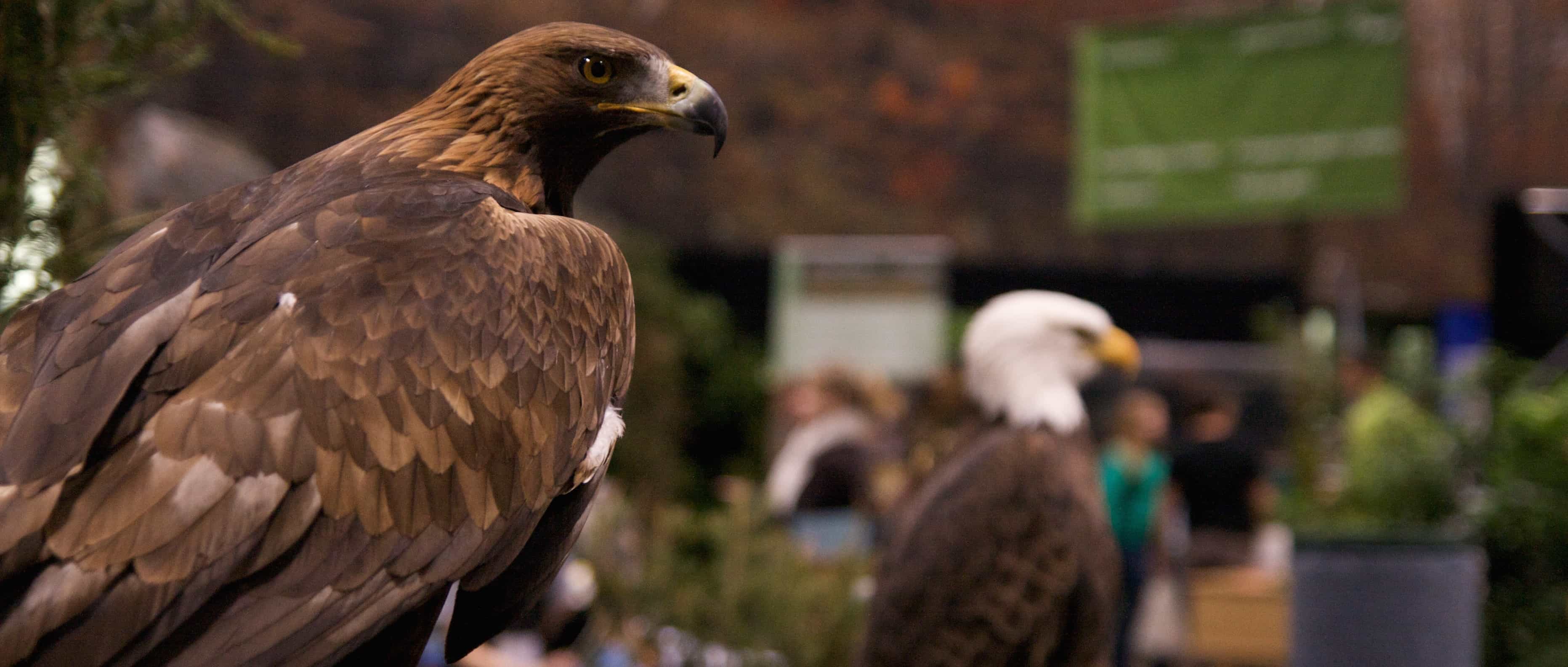Share this article
Federal Court Overturns FWS’s 30-year Eagle Take Rule
A U.S. district court in California ruled this month that the U.S. Fish and Wildlife Service (FWS) failed to comply with the National Environment Policy Act (NEPA) for their revised regulations regarding permitted takes of bald and golden eagles in 2013. Prior to this ruling, the revision increased the maximum duration of programmatic permits allowing for the incidental take of the eagles during otherwise lawful activities from five years to thirty years.
Background
FWS issued regulations authorizing the limited take of bald and golden eagles in 2009. The Bald and Golden Eagle Protection Act (BGEPA) prohibits the take of eagles without a permit. The act defines take as “to pursue, shoot, shoot at, poison, wound, kill, capture, trap, collect, destroy, molest, or disturb.” The 2009 rule allowed FWS to issue permits for the incidental programmatic, or recurring, take of eagles. The permits included safeguards to ensure that any permitted activities were consistent with the preservation of eagle populations.
Permits were granted for a period of five years, at which point permittees could submit a request for renewal. FWS published an environmental assessment of the rule that acknowledged these programmatic permits would “indirectly result in impacts to habitat from loss, fragmentation, and reduced suitability for eagles and other wildlife” but that by issuing a conservative number of these permits they would have “no significant, direct impacts to the biological and physical environment”.
Wind development projects have increased substantially since the 2009 rule was issued. In response to this increase, FWS developed the Eagle Conservation Plan Guidance (ECPG), a voluntary program designed to help wind projects comply with regulatory requirements and avoid unintentional takes of eagles. Many in the wind industry, however, felt that the ECPG failed to address a major issue with the 2009 rule – the five year limit on permits was too restrictive. The uncertainty surrounding renewal of permits every five years made it difficult for wind projects to obtain financing for projects when the life of most wind turbines is 20 to 30 years.
The 30-Year Take Rule
FWS revised the 2009 rule in 2013, increasing the maximum term for programmatic permits from five years to thirty. According to court records, FWS stated the revision was to “facilitate the development of renewable energy and other projects that are designed to be in operation for many decades” and “provide more certainty to project proponents and their funding sources, while continuing to protect eagles consistent with statutory mandates.”
These 30-year permits would not be guaranteed for the entire duration. Provisions in the new rule mandated a review of the permit every five years to evaluate the current eagle morality at the site and determine if a threshold had been reached. If so, implementation of more conservation or mitigation practices would be required and if necessary FWS could suspend or revoke the permit.
FWS determined the 2013 revisions were categorically excluded from further NEPA review, telling the court that the revisions were “strictly administrative”. They further justified the decision by arguing that any environmental effects from the 30 year permits would be too vague to meaningfully analyze. Additionally, project development actions taken by the permittee process would likely be subject to the NEPA process.
The American Bird Conservancy disagreed with FWS’s “categorical exclusion” decision. They filed suit in federal court arguing that the new rule undermined the purpose of the Bald and Golden Eagle Protection Act (BGEPA) and lacked important safeguards to protect eagle populations.
Court Decision
The court ruled FWS had indeed failed to show a basis for the categorical exclusion of further NEPA review, saying in their decision that FWS “has not adequately explained why the environmental effects of the Final 30-Year Rule are ‘too broad, speculative, or conjectural to lend themselves to meaningful analysis.” The court also pointed to internal dissent in FWS, with some staff having strongly recommended performing an environmental impact statement for the new rule. These factors convinced the court that substantial questions exist on the revised rule’s effects on eagle populations. The court ordered the Final 30-Year Rule be remanded to the FWS for further consideration.
The American Wind Energy Association, who intervened in defense of the 30-year take rule, disagreed with the court’s ruling. They were quoted by E&E News saying, “[t]here is already precedent for life-of-project permits available under the Endangered Species Act, for species that are by their very nature more imperiled than eagles, so we view the 30-year permit duration as being both consistent with existing permit programs and fully protective of eagles and their habitats, while providing legal certainty to the wind industry and other applicants.”
George Fenwick, president of the American Bird Conservancy, said in a press release after the ruling “We hope that this court decision shines a light on the need for the [Fish and Wildlife] Service to be fully empowered to do the job it is mandated to do. Our nation’s wildlife – and the agency appointed to protect it – deserve nothing less.”
Sources: E&E News, U.S. Fish and Wildlife Service Website, United States District Court of Northern California
Header Image: A golden and bald eagle at the 2009 Toronto Sportsmen Show.
Image Credit: Matt MacGillivray, licensed by cc 2.0








